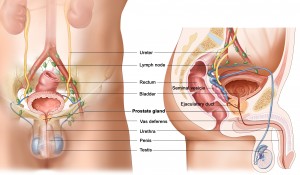 HIFU as a viable treatment option for prostate cancer, is coming of age and seems to be joining the ranks of accepted treatment options. There are two main machines that adminster the HIFU treatment under the care of a qualified urologist; Ablatherm HIFU and Sonablate HIFU.
HIFU as a viable treatment option for prostate cancer, is coming of age and seems to be joining the ranks of accepted treatment options. There are two main machines that adminster the HIFU treatment under the care of a qualified urologist; Ablatherm HIFU and Sonablate HIFU.
HIFU is still undergoing clinical trials in the United States awaiting FDA approval, but has been an acceptable treatment worldwide for over a decade. In North America, the first clinic to pioneer the treatment here is the Maple Leaf HIFU clinic in Canada. Americans fly to Toronto to receive the Ablatherm HIFU treatment. The latest HIFU research has been published in 2012 with positive results. There are other treatment locations in Mexico and the Caribbean.
There are advantages over other types of treatment such as surgery or radiation, which include less cases of impotence or other long lasting side effects. Qualifying for HIFU treatment depends on the stage of the cancer, age and general health. Quality of life issues are considered when selecting the appropriate prostate cancer treatment.
In some cases, active surveillance or not doing anything with respect to a treatment, is selected while the growth of the cancer is monitored until the cancer is more evident.
Pros and cons relate to the amount of research that had been available prior to 2012. With a small sample size, statistics were sometimes conflicting and the treatment was still considered one that is under further investigation in the U.S. despite worldwide acceptance. With a decade of followup and the recent 2012 research, this minimally invasive treatment is gaining acceptance in the mainstream medical community. The final word will be the FDA approval that may be forthcoming as early as 2013.
Advantages to HIFU treatment include the minimally invasive treatment modality which does not involve a scalpel or external application of radiation to the body.
The statistical discrepancies are narrowing as more and more research is conducted, but it seems not more than a fifth of patients treated with HIFU had to undergo additional treatments. See the published results for accurate medical statements.
Some cons or negatives to the HIFU treatment include possible incontinence, scarring of the prostate which can lead to difficulty urinating, ED – although the rate is very low, and the risk of further treatments becoming necessary down the road. Another negative about HIFU is that, since it is not yet approved by the FDA in the states, the treatment is costly for some, since most insurance will not cover it. But finances aside, the treatment itself is safe and effective, non-invasive and carries with it minimal side effects for the treatment of organ-confined prostate cancer.
Finally, a Gleason Score of 8-10 requires a different treatment method as HIFU is usually only used for Gleason Scores up to 6 (3+3) for organi confined cases.
The imaging tools allow objective location of the disease through scanning. This is much more precise than random biopsy. One major advantage of HIFU is that after the treatment, the patient can carry on with normal day to day living without a long recovery period. Treatment one day and golf, fishing or boating the next, is very appealing to many and a reason why HIFU will continue to gain in popularity after FDA approval.
UCLA medical center is the only center conducting trials of the HIFU procedure on the West Coast of the U.S. With a risk of metatisis, HIFU uses the same ultrasound waves that are used on pregnant women, but they are focused so they generate the high heat that can kill the cancerous tissue. Nothing goes through the skin, it is a very precise, computer controlled operation that lasts about 2 hours. Patients typically go home the same day with almost no pain or side effects. PSA levels are monitored.
Once the decision is made to employ a particular treatment, then selecting the right facility to have the treatment done is paramount. With HIFU, the selection is either to use the Sonablate or Ablatherm machine. Ablatherm HIFU has treated more patients in North America (in Toronto) than Sonablate and the experienced team there has offered the treatment since 2003.
When considering other treatments from active surveillance, brachytherapy, cryotherapy or surgery, HIFU is rising in visibility and effectiveness as a viable and successful treatment for organ-confined, early stage prostate cancer.

